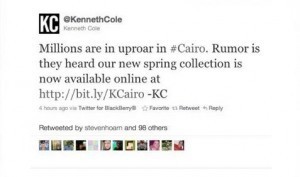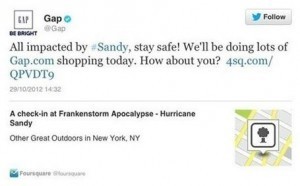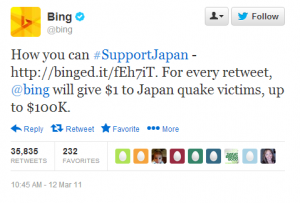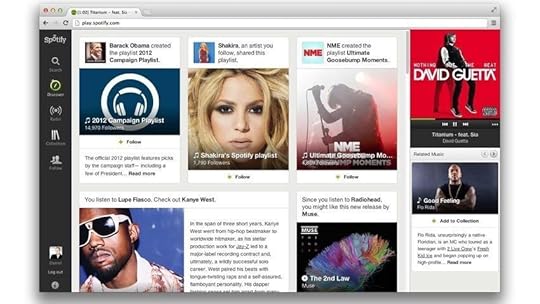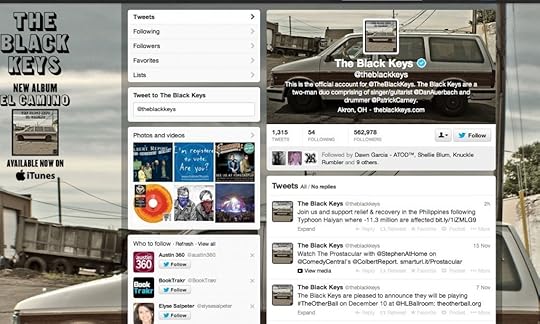Erik Qualman's Blog, page 619
December 15, 2013
Be More Social About Getting Fit

 With social media, you don’t need to keep your workouts the same all of the time or at the same place.
With social media, you don’t need to keep your workouts the same all of the time or at the same place.
Fitness classes, instructors and groups are taking their workouts out of the gym and getting fit creatively.
You can also jump on social media to vary your workouts and where you go, what you do and even what you pay. Being active on social media can help you be active!
Yoga
You can find yoga classes anywhere from your gym to the local high school to Whole Foods to your kid’s dance studio. Because yoga doesn’t always take much equipment, and many yogis carry their own, classes can be anywhere there is space for a few mats. Log on to Facebook and follow a few studios to see where and what’s happening. Follow your favorite instructor and your yoga friends; you never know where you’ll find a new class to try. It’s kind of fun to see who offers what and what you end of paying. The great thing about yoga is you can always make it your own class, no matter how gentle or tough the instructor is.
Boot camp
Boot camp classes are happening everywhere. Friend and follow your favorite instructor, especially if she is an independent, and see where and when she’s teaching. Get ready to throw on your cross trainers at a moment’s notice if she tweets an unscheduled workout in the park. How great to get your workouts in as outdoor activities on a sunny day instead of being crammed in the gym when you can find boot camp outside.
Spin
Spin is becoming one of the hottest workouts, as though who have been doing it in the gym can attest to. Now it’s branching into new independent spin focused workout clubs. Follow these smaller independents on social media – you never know when they’ll offer a free class or special package. People afraid of their own coordination love spin as do bikers and triathletes that need a change of pace every so often.
Biking or running groups
Sure you can bike or run on your own, but every so often you want that camaraderie of a group or club to motivate you. Follow your favorite bike shop or running store and you may find some groups you like to exercise with every so often.
For those looking to change up their workout routine, let social media be your guide.
Some people love the challenge of finding new workouts, outdoors or inside depending on the weather, free or discounted depending on their budget or just something new and out of the norm to add some variety. You can find it all on social media – just follow your current instructors and workout buddies.
You never know, you may end up finding your new favorite is something you never dreamed of – yoga in the park anyone?
Photo credit: opensourcelive.net
[image error]
December 13, 2013
Organic VS Promoted Content: Which Reigns Supreme?

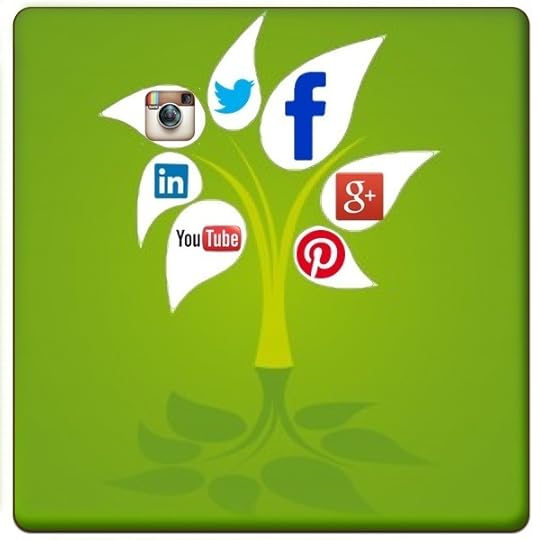 So I am personally all about all-natural, organic, and sustainable stuff. Whether it is the toothpaste I use, the food I eat, or how I buy pretty much anything in my life, having something feel real and not artificial is important to me. This combines with my respect for authenticity and transparency in relationships. My overall preference for the real deal even comes into social media with the curious question I’ve stumbled upon when it comes to social media marketing; should one pay to promote or not?
So I am personally all about all-natural, organic, and sustainable stuff. Whether it is the toothpaste I use, the food I eat, or how I buy pretty much anything in my life, having something feel real and not artificial is important to me. This combines with my respect for authenticity and transparency in relationships. My overall preference for the real deal even comes into social media with the curious question I’ve stumbled upon when it comes to social media marketing; should one pay to promote or not?
Within the past year, both Facebook and Twitter launched the capacity for users to pay to promote their posts and tweets respectively. Facebook already had their “Ads” that would show up on the side of users’ timelines, but these two new functions put your promoted content right in the personal feeds of your customers. It comes, understandably, from the need to monetize these popular sites, but the real question comes in as to what is the best use of an organization’s money when it comes to engaging your audience; are you really getting what you pay for? Obviously, ideally your content will make it’s way out into the world on it’s own but usually, customers aren’t just following you, they’re following all sorts of different pages, even your competitors for business.
So it seems logical, you want the edge so you pay for promotion and you squash out the competition. Right? Well, the jury is still out on that. Not to say that promoted posts are not useful, but they also aren’t shown to be the way to go for every business and for every post. Social media is about engagement, and using paid promotion for posts can come across as spammy and inauthentic. Facebook paid promotions can be useful to get the word out about a new offer you have for your business or for an upcoming event since they only go out to those who “like” your page, as opposed to Facebook ads that go out to anyone and everyone. The same goes for Twitter. Think about what you’re posting and what is worth it to pay to get out to everyone and sort of muscle your way into their feed.
Another consideration to make is where you are putting this content. Are your customers even on Facebook or are they on Pinterest? Does your content make sense for the social media site you are promoting on? Facebook is different from Twitter which is different from LinkedIn which is different from Instagram (which also now supports ads). It is important to be intentional about the core what, where, and why of posts in order to get the greatest results. From my perspective, the general logic here should focus on a few points: moderation (as with all things), organic engagement & paid promotion, and lastly, cater to the medium. For this last bit, whether that means you cover your basis on every social networking site or hone in on one, you can save a lot of money and time by knowing where your audience is and creating content for that particular venue. Doing all this will create an authentic aura that avoids the negative connotations of spam ads and allows for you to get the word out on all the great things your organization is up to.
[image error]
December 11, 2013
Shop With Social Media in Mind This Holiday Season

 Holiday shopping is almost like a sport these days. Everyone wants to get the most for their dollar.
Holiday shopping is almost like a sport these days. Everyone wants to get the most for their dollar.
If you’re looking for ways to save money on your Christmas shopping, social media offers several ways to help you stretch your personal budget.
Follow your favorite retailers on Twitter. Many retailers tweet about special offers, coupons, and deals. Stay on top of what’s on sale now by checking your Twitter account before you make any big purchases.
Don’t stop at just following the retailers, however.
Follow your favorite coupon and deal sites as well. They’ll do all the work to help you find the best deals for all your shopping needs. They can help you combine coupons, locate rebates, and tell you were to get items for the lowest price.
Many retailers are offering lots of contests and promotions this holiday shopping season. Enter giveaways and sweepstakes and you can win free prizes or even cash back.
Many stores reward their Facebook fans with exclusive deals and offers as well. Look to see what you’re friends are sharing as well and you’ll likely find some excellent deals.
Coupon Sharing Sites
There are plenty of websites that offer the latest coupons and discounts for many retailers. They often include printable coupons and online discount codes.
Customers can rate coupons, share secrets on how to double the coupons or how to get competitor’s to match prices. Many sites have forums that contain plenty of helpful tips as well.
There are also several sites, like Ebates, that offer cash back for your online shopping. You can earn extra money by referring your friends.
Mobile Apps
Most major retailers have their own mobile apps that will allow you to shop from home or find the best prices while you’re in the store. Many of the mobile apps also include special deals and coupons for shoppers.
Also, look for mobile apps that allow you to compare prices.
There are several great apps that allow you to scan the barcode of an item so you can quickly learn whether or not you’re actually getting the best deal.
There are also many budgeting apps on the market that can help you keep track of your personal budget needs while you’re Christmas shopping. They can help you establish a budget and ensure that you aren’t spending more than you can afford.
Pinterest allows users to post pictures of the best coupons. Follow pin boards of some of the best holiday shoppers.
Many bloggers who operate coupon-related websites use Pinterest to share the deals. Look for a variety of printable coupons and online discount codes.
Create your own pin board that will help you plan your Christmas shopping. You can keep all the discounts listed in one place to help ensure you’re getting the best deals on everything you’re buying.
Even though Black Friday and Cyber Monday have passed, there are still many deals to be found.
Use social media to help you discover the best discounts and promotions available.
Photo credit: dukky.com
[image error]
December 10, 2013
Why Marketers Should be Excited by iBeacon Technology

So we’ve had QR codes and location based services for some time now in the tech and social industry – and since Apple introduced their iBeacon (although this tech has been around for a while too) – we’re entering new territories as marketers and customers.
What are iBeacons you ask?
iBeacon’ is an Apple marketing term for a specific type of Bluetooth Low Energy (also known as BLE). According to Apple Insider – “Essentially, rather than using satellite signals to locate a device anywhere on Earth as GPS does, BLE can enable a mobile user to navigate and interact with specific regions geofenced by low cost signal emitters that can be placed anywhere, including indoors, and even on moving targets.”
Why this is awesome for marketers:
Imagine being able to send messages to consumers more contextually. For example, if your brand is trying to target consumers at a venue for an event; you’ll be able to know they’re there and send a message through your brand app to them automatically. Not only is this awesome, but it’s convenient for the consumer too.
Why is location so important? It creates the contextual relevance for advertising that otherwise isn’t already there. For example, being at a concert when you get an advertisement for a discount on food located at the venue is way more useful then getting that advertisement on a random day. It is then useful, easy to use, and actually relevant to that person.
Imagine your target consumer is parking at a large mall. You already know they have an intent to purchase, and now you can target them accordingly right through the device that is already at their fingertips. They’re probably already thinking what deals can I snag while I’m here – the mindset is there; the location is there; and the context is there.
What I think is even cooler? Sending messages or showing different visuals to a person as they walk by a display due to the iBeacon. For example, if someone sees a product they may like, perhaps they get a real-time demonstration of it right then and there.
Things we need to consider:
What if Blue Tooth is not enabled?
Unless the consumer is an early adopter and really into tech like this (as marketers like myself are); adoption will be slow.
Privacy is still a rampant issue that many consumers face and tech like this make some uncomfortable.
What do I envision?
I see this technology growing rapidly and taking shape in many apps and devices. However, I see mainstream adoption not truly occurring until 2015, when more people grow comfortable with this type of location and contextual detection within apps and devices.
Tip to marketers:
Be patient, but be bold too. Take into consideration the age old saying, “test and learn.”
[image error]
Get More Social in Your Hosting Options

A quick search for “web hosting” yields about 4.5 million results in Google. This can cause many business owners to feel overwhelmed in their search for a web hosting service.
One of the best ways to help narrow down your options is by using social media. Social media provides a lot of useful information that can help you find the best web hosting service for your business.
Consider Your Needs
Before you start researching your options, it’s important to know what your website is going to need.
For example, if you need a simple website that gives people your phone number, you won’t need to pay for extra bells and whistles.
If however, you want to sell products online or you want to include a blog, you’ll need to look for a web hosting company that can meet your needs. If you’re looking for a more complicated website, you’ll need to consider factors like storage space and tech support.
According to Bob Parsons of GoDaddy, business owners should pay attention to their competitors but stay focused on themselves. Peaking at your competitor’s web hosting space can help you gain an idea of what services they’re using on their website. Then determine how you want your own website to look and begin looking for web hosting services based on your needs.
Follow Web Hosting Companies on Facebook
Facebook provides many opportunities to scope out web hosting companies.
One can become a fan of some of the most popular companies on Facebook and read what their customers are saying.
Look for positive and negative trends.
See how the company responds to customer comments. It can give you a good idea about what type of problems people encounter and how the company responds to such concerns.
Ask questions about their web hosting options as well.
Try to learn as much as you can about various plans, price points, and services to see which company looks like it can meet your needs best.
Reach Out on Twitter
Twitter will allow you to reach out to both web hosting companies and fellow business owners alike. Send tweets asking for recommendations for web hosting companies and hear what other business owners have to say.
Also, you can reach out to web hosting companies on Twitter.
Ask questions and see how quickly they respond. See what each company tweets about and look for a company that seems to provide the type of customer service you’re looking for.
Connect on LinkedIn
LinkedIn provides many opportunities to reach out to fellow small business owners and ask about their experiences with web hosting companies.
Talk to people who own similar businesses to learn their thoughts on their current web hosting providers.
YouTube Tutorials
Look for YouTube videos about web hosting options. You’ll find many videos explaining the services that various web hosting companies offer.
You’ll also find tutorials about how to use web hosting services. Watching videos can be one of the best ways to see firsthand if certain platforms appear user-friendly.
Social media is a great way to see what other people are saying about web hosting companies.
Read user reviews, ask questions, and gather information that will help you find the right company for your business.
Photo credit: buffalotracks.com
[image error]
December 5, 2013
Benefits of the New Mobile Enterprise

The new mobile enterprise seeks to solve many problems. As the young lady in the popular AT&T commercial tries so hard to explain, less is more when it comes to mobile technology. The new mobile enterprise is a way to bring a higher end of mobile devices to the workforce in order to give more applications, and communication and collaboration services. In order to effectively utilize this new enterprise, business leaders need to stay ahead of this major change in the industry.
Bringing together a number of workers on a few mobile devices is the most effective way to stay ahead of the game. It is clear from the following benefits that there is a lot to like about the new mobile enterprise, and how it is changing the world of business every day.
Mobilization: People, Applications, and Things
As Michael Tessler is quick to point out, management complexity is easily reduced with the new mobile enterprise. Employees have different needs, from remote offices to a fixed-line phone. But that is just the beginning, as mobilization is enjoyed aside from the users of the new mobile enterprise.
Applications can benefit from expense management, CRM, field force, and much more. Even tedious tasks which could previously only be done at home are now right at your fingertips throughout the day. Drawn out telephone calls to check on your home insurance rates or pay your cell phone bill can be done through an application on the mobile device you own. If you consider that mobilization can even occur with vending machines and thermostats – it’s clear just how far the mobilization enveloped can be pushed.
Women have kept up in the application process and are needed to create business tools to help their businesses and personal lives. For example, the 5 women who created amazing apps featured on Women 2.0 were an inspiration to others hoping to succeed in the new enterprise era.
A Big Jump in Speed
With the new mobile enterprise, devices can get connected to the best speeds available. Internet options can now be harnessed fully and enjoyed across a company, which leads to higher productivity and satisfaction. Centralizing mobile access points with faster speeds is a match made in heaven – the new mobile enterprise version, of course.
The Next Generation Recruiting Tool
Forget about 401Ks and amazing insurance coverage packages. While these certainly still have value, the new mobile enterprise can offer even more benefits to workers. What would the ability to work at home do for the best and brightest workers? Companies are quickly realizing that MiFi and the ability to accommodate work into their life are gold in recruitment.
Investing in the new mobile enterprise isn’t just another perk for the company and for its employees. It is a way for companies to give their employees what they truly want.
An Amazing Amount of Portability
Geolocation and instant network access can be the saving grace of workers that are on the go. With access to what they need and when they need it, the new mobile enterprise gives them that 24×7 support to make the most of their time.
At the end of the day, portability and convenience are among the most noticeable advantages – advantages that can lead to company- and employee-significant benefits.
Undermining Telecom Costs
An array of telecommunication bills may be a thing of the past, according to Tessler. Making that commitment to one phone service, instead of several wireless subscriptions, cuts on the mounting costs of operation.
A step into the new mobile enterprise can thus be a great way to save some money. Simpler is oftentimes better, after all!
Things can become much simpler with the new mobile enterprise. Employees can enjoy increased versatility, connectivity, and productivity thanks to evolving technologies. Companies can likewise cut down on the clutter, benefiting from the simplicity of the new mobile enterprise. It may certainly be the best of many worlds!
[image error]
December 3, 2013
Twitter Blunders by Big Companies: Learn from Others’ Mistakes

Twitter can be a place to connect with consumers, promote new items and create conversation about your brand – but you only want good conversation.
All it takes is marketing knowledge and common sense to manage a Twitter account for a business. But as shown by these companies, common sense isn’t all that common.
Here are four major companies that have created bad conversations about their brand – and how to avoid the same.
Kenneth Cole’s failed attempt at comedy
In February 2011, thousands of protesters helped oust Hosni Mubarak, ex-president of Egypt. These 18 days of protests resulted in deadly encounters with police and military.
Some companies showed concern and hoped for peace in Egypt. Kenneth Cole tried to make a joke out of the situation, claiming their latest collection was the reason for the Middle Eastern revolution:
Source: http://blog.conduit.com/2013/08/22/5-tweets-gone-horribly-wrong/
To no one’s surprise (except the designer clothing company), it wasn’t funny.
The Important Lesson: There is a time and place for comedy – a serious, political and deadly situation is not one of those times.
Gap promotes its website while some lose everything
More than a year later, thousands of New Yorkers and New Jersey residents are still dealing with the effects of Hurricane Sandy. While people were literally weathering the storm, Gap tried to make a few extra bucks out of the whole situation:
Source: http://mashable.com/2012/10/31/gap-tweet-hurricane-sandy/
Oh, and yes – Gap “checked-in” at Frankenstorm Apocalypse in New York City.
The Important Lesson: Be sensitive from the start until the end of your tweet. There are some situations that a tweet should be 100% thoughtful, not just another ad.
Instead of making money, be generous and offer your services to those in need. Example: Verizon, who brought fiber-optic Internet to Fire Island, NY, when it was struck by Hurricane Sandy.
Entenmanns was not on the same page
Thanks to the semi-crazy HLN news anchors, everyone watched the Casey Anthony murder trial – and most were not happy with the verdict. Almost immediately, #NotGuilty was trending on Twitter. People felt that no justice had been served for Anthony’s murdered child, Caylee.
The Entenmanns’ office must’ve been one of the few places without the trial on the TV. They tweeted:
Source: http://techcrunch.com/2011/07/05/entenmanns-hashtag-surfing-fails-hard-with-notguilty-tweet/
The Important Lesson: Always check why a word or phrase is trending before you include it in a tweet.
Bing
The 2011 earthquake and tsunami in Japan were tragic – and Microsoft’s Bing turned this disaster into a campaign:
Source: https://twitter.com/bing/status/46597693585358848
Bing was hoping for 100,000 retweets to promote the search engine – because only that would make Japan worthy of the donation (hope you picked up on the sarcasm there).
The Important Lesson: Charity should be a part of any business, but don’t turn make a social media campaign out of it. Consumers support genuine companies and will call out the inauthentic ones.
Take a lesson from Microsoft’s competitor, Apple. Instead of making a campaign out of the tsunami, the company had an easy place to donate to the American Red Cross on iTunes. This encouraged people to donate without it turning into a promotion.
[image error]
Video Marketing – The Basics

Still terrified by the world of video marketing? Then here’s a run down of the need-to-know basics to soothe your marketing woes….
Use A Reliable Hosting Service
When you are marketing your video, the last thing you want is an unreliable hosting service that ruins your efforts. It’s important to use a provider that will offer you consistent quality and give you the assurance that your video won’t be spontaneously taken down at any point.
Websites such as YouTube and Vimeo are traditionally pretty reasonable at providing such a service; if you want 100% peace of mind, then investing some money into a host such as Brightcove or Bitsontherun might be a good idea.
Remember Your Video SEO
Video is a great SEO (search engine optimization) booster, and using sites such as YouTube can greatly aid your SEO efforts. Just as in any SEO strategy, your main aim is to allow your video to be found by online users who are searching for content related to your video.
When marketing video, making your video findable by search engines is your top priority. It’s essential, therefore, to fill out all of your video meta-data on all the video sharing sites it is hosted on, and to write as much information as the sites allow you to include.
Utilise The Power of Social Sharing
Cracking social media isn’t always easy, but the power of a social share is unquestionable. Sharing online video on Facebook, Twitter, Google+, LinkedIn, and other social sites allows you to reach an almost limitless audience.
One share to your primary audience could generate further social shares within that group, thus reaching audiences you’ve never interacted with before and spreading your video’s message way beyond your current online reach.
Get Interactive
No matter what platform you are using—your website, social profile, video-sharing site, or blog—as the home of your online video, you will need to embrace and interact with the communities there.
Engage with commenters and other users, Like or comment on their content, video-respond to them, share their work, and generally participate in the discussions taking place in those locations. Doing so will encourage other users to do the same, in turn, with your content and will generally create good marketing karma for you.
Measure & Monitor Success
Always remember that measuring success creates success. Whether you’re looking to improve your video views, social following, Likes, conversions, website visits, or bounce rates via online video… you need to regularly check the success of your strategy and tactics.
Try to check on your success monthly to allow for an appropriate amount of time to have elapsed. Upon checking your results with tools such as Google Analytics, SEOmoz, HootSuite, and the like, sit down with your team to work out how to strengthen your campaign further.
Madeleine Hammond is a marketing executive at Skeleton Productions – one of the UK’s leading video production companies.
[image error]
December 2, 2013
How Social Media and Streaming Have Influenced the Music Industry

Talk to anyone over the age of 22, and they’ll bring you back to the dark ages of digital music, when there were only two options for satiating your current music obsessions: a) Drive all the way to the record store and spend way too much on a band’s entire album, even though you only liked two songs, or… b) “When I was a kid, we downloaded music illegally—and we liked it that way!”
Sure, that dynamic still exists somewhat today with paid download-based stores like iTunes, but more than ever, music fans are turning to ad-or subscription-based streaming services like Pandora and Spotify, which, as of July 2013, boasted over 24 million and 200 million users respectively.
That’s big stuff for an industry that was thrown into such disarray in the beginning of the digital revolution, when the entire music world (or at least the corporate side of it) seemed poised to collapse at any given moment. However, the music industry has also been one of the first to benefit from digital disruption, forced (kicking and screaming!) to grapple with these new methods of listening, distribution, connecting and marketing. In fact, perhaps not surprisingly given the peer to peer nature of the now irrelevant Napster, the service that kicked this revolution off, most of these good changes have occurred on social media, which has provided the tools both to increase virality, tighten the community around a band and actually turn a profit (though whether that profit goes to labels or artists is another question).
That’s an irony not to be missed: the very same tools that bulldozed the industry’s traditional model are now the venue for its renaissance. How so? It’s all about shortening the distance between the artist, the listener, and all 5,000 of their friends. Let’s take a deeper look at just how social media has and continues to be the key to bringing the music industry into its next phase.
Listening is Streaming
According to Nielsen, music streaming increased a full 24% from 2012 to 2013, while downloaded sales decreased 4.6%. While downloads have been steadily decreasing on their own, this stat is still somewhat reflective of a broader shift in the listening experience from downloaded to streamed songs.
Why are music fans going this way? Streaming combines all the best of radio with all the best of a personalized library kept on a computer or mobile device. No longer do listeners need to make sure they’ve got all of their favorite songs on their laptop before heading to work for the day. Nor is there any need to sit through lengthy ad breaks or poor radio DJ choices, let alone that obnoxious “banter.” Streaming vastly improves the listening experience, making listeners much more likely to engage for longer periods of time and to share their experiences.
Streaming Makes Sharing and Discovering Automatic
With complete Facebook integration, services like Spotify automatically post what users are listening to right to their feed. This makes it easy for that listener’s friends to listen to the tracks themselves or add them to their playlists. And when users want to make their friends directly aware of a song or playlist they’ve curated, this is simple to do right in Facebook.
While Spotify may not be worth it for big bands like Radiohead, the sheer exposure available on the platform makes the service well worth it for smaller bands. After all, those 24 million streamers are as instantly available to brand new garage bands as they are to Jay-Z—all the more so when listeners click the “Discover” button.
Likewise, listeners on Pandora discover new music when they create a station, as the service uses its industry-shaping algorithms to play highly related music. And premium users can get the inside scoop on new releases, which makes them more likely to advocate for new albums on their social media feeds.
All of these features on their own can be crucial for a band’s success, but they can be all the more so when an influential (read: celebrity) user likes their work. This is something the band Spirit Animal found out firsthand when Sean Parker of Napster fame added the band’s single, “The Black Jack White,” to his popular “Hipster International” playlist. The move greatly increased the band’s social media following, and, with over 450,000 plays and growing, they also made a fair amount from Spotify itself, not to mention associated iTunes sales. That’s a whole lot of buzz for a relatively unknown band, which in turn can help both popularize them further and generate revenue.
Social Media Creates a Supportive Community for Bands
Of course broader social media sites like Twitter and Facebook aren’t just the host to services like Spotify—they’re pretty crucial for creating buzz in their own right. But where these sites are even more important are in forming a tight community around a band. On Facebook, fans can create their own groups, where they can post news and engage in discussions about the latest band news. Bands can create groups as well to give fans the inside scoop.
On Twitter, bands can create hashtags around upcoming events to keep their fans aware of everything they’ve got going on. And on both of these sites as well as on the newly relaunched, Justin Timberlake-owned MySpace, fans can engage directly with band members, who can respond in seconds rather than sitting down to write a whole letter in response to fan mail. And you know how the old saying goes: “A fan that gets a tweet back is far more likely to engage with and become an advocate for said musician’s music.” Or something like that.
And who can ignore the power of YouTube? From Justin Bieber to Carly Ray Jepson, the video platform has been crucial not just for discovering new talent, but also for creating avid followings on artist channels, which in turn increases exposure amongst the wider population. Fans who are a key part of an artist’s initial success are much more likely to stick around, as they’re invested at a deep level.
Social Media is Data
While exposure and revenue generation are key considerations, it’s important not to forget one of the prime benefits social media and streaming offers the music industry: data. Bands, band reps and labels can now head out into the world with proof of their popularity. Some bookers won’t even say “yes” to a performance unless a certain number of likes have been reached.
In fact, social media has helped create so much data, many bands need companies to compile, sort, and analyze that data. This helps them not only make use of social insights in their daily marketing and PR efforts, but also to determine where they should even tour. There’s no use, after all, in using a limited budget to visit a destination advocated by an avid fan, only to find a meager and lackluster audience.
The Takeaway
There’s no denying that social media and associated streaming services have changed the way fans discover and enjoy music, as well as how the music industry discovers, promotes and fosters both new and old musicians alike. If there’s one thing that’s clear in this new world, it’s that things are changing rapidly, and they’ll only continue to do so. But isn’t that reflective of the music industry at large? One look at this music timeline, and it’s amazing the technology waited this long to evolve alongside the legends.
What do you think about social media and music? Is it good for the industry, bad, or a mixed bag? Let me know in the comments below!
[image error]
Your Tweets Don’t Need to Fall into the Cracks of TwitterWorld

 There is nothing worse than spending the time to come up with a really awesome or inspiring tweet just to have it fall into the Twitterverse without ever being retweeted or commented on. While this is bound to happen on occasion, if all of your tweets are being ignored then perhaps you need to change the way you write them. You will find that the more followers you have the harder it will be to get tweets retweeted. What? You thought more followers automatically meant more retweets? Sadly, this is not the case. What can happen is that the more followers you have, the more tweets there will be on the newsfeeds which can bury tweets very quickly. There are some great tips for writing retweetable tweets listed below.
There is nothing worse than spending the time to come up with a really awesome or inspiring tweet just to have it fall into the Twitterverse without ever being retweeted or commented on. While this is bound to happen on occasion, if all of your tweets are being ignored then perhaps you need to change the way you write them. You will find that the more followers you have the harder it will be to get tweets retweeted. What? You thought more followers automatically meant more retweets? Sadly, this is not the case. What can happen is that the more followers you have, the more tweets there will be on the newsfeeds which can bury tweets very quickly. There are some great tips for writing retweetable tweets listed below.
Think of Tweets as Headlines
When you are looking at news on the internet or if you are one of the few who enjoy reading an actual newspaper, what makes you read an article? If you think about it, it’s typically the headline that grabs your attention and makes you want to read it. Think of your tweets in the same way if you want to get anything out of them. After all, with only one hundred and forty characters it’s not like you can write a diatribe! Look at headlines and think of how you can apply that type of writing to your tweets. Do you want to shock, inform or entertain your followers with your tweet? You’ll find that your tweets are being seen and shared if you take this stance on everything you post.
Offer Links to Your Website
Since you are promoting your company, then each tweet needs to finish with a link to your website. On those tweets where your introducing new products or are offering a special discount on an item, make sure the link is in the tweet. Not only will this get your tweets retweeted, but it will also drive more traffic to your website. Nobody wants to have to search around or Google your company name in order to take advantage of special offers unless it’s for something free. When you include the link, that’s the same thing as giving your followers a call to action and they will share your tweet so their friends can take advantage of the deal.
Offer Statistical Information
People love to get random and interesting information as long as it is relevant to them. It is important that you find some great statistics based on your industry as tweet them if you want better tweets which lead to more followers. It is possible to get fake followers but faking fame on Twitter is easy but won’t bring in real customers. And you need to have real customers as followers if your marketing strategy is to pay off for you. So do some research and once or twice a week post some fun statistical information that is bound to be retweeted more than once.
If your tweets are not getting the notice you think they deserve then you need to switch up what you are doing and try something else. The above are just three ways to write tweets that won’t end up in Twitter no man’s land!
[image error]


